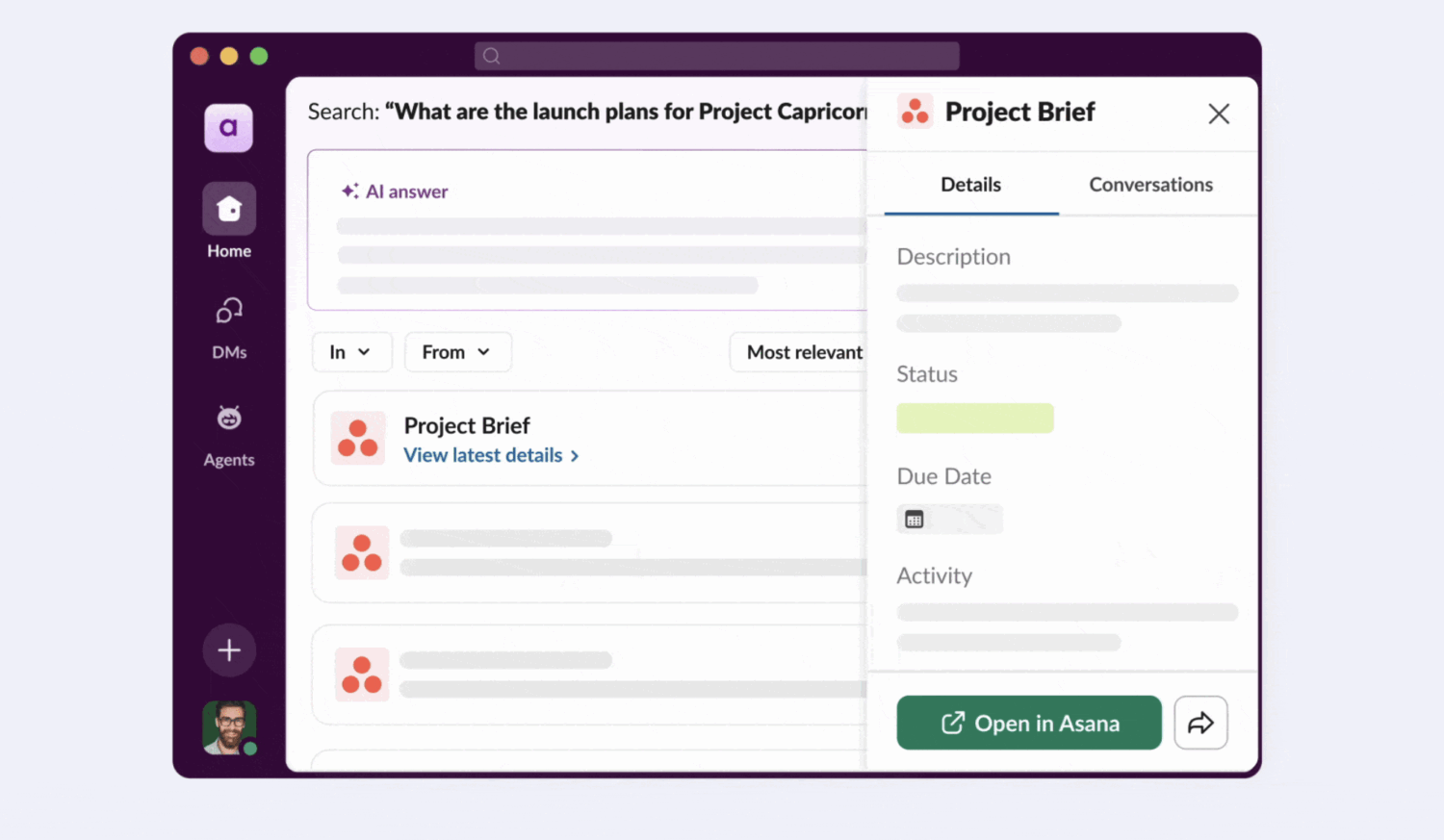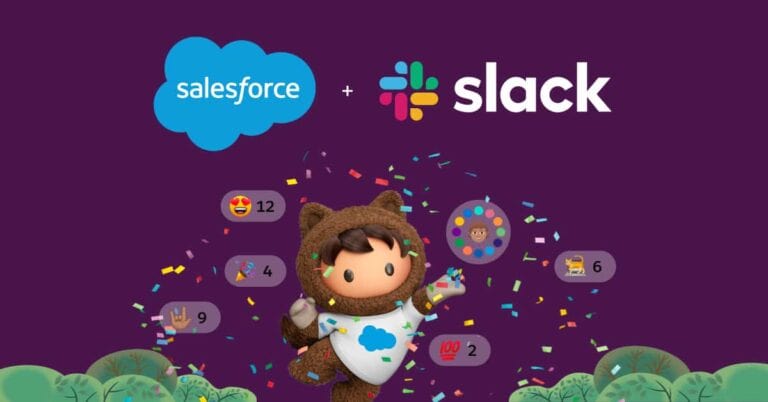To build good AI agents, you need data and context. Slack believes it has a gold mine of data. According to the company, the conversation data between employees is said gold needed to feed AI with the right context. That data is now available within Agentforce, but also to third parties.
In recent years, there has been a race to build the best LLMs and have sufficient computing power to enable AI. The latter has been achieved, and now it is time to collect the right data and context and feed it to AI agents.
We are therefore seeing many SaaS providers busy cleaning up their data models, structuring them, and building applications differently. Slack believes in the power of conversation data. Conversations between colleagues about ongoing projects can be very valuable and contain data that is never recorded in official documentation.
Consider, for example, a special project channel. This is often where agreements are made, the timeline is set, the end product is defined, the requirements are established, and the necessary functionalities are determined. Such a project channel can therefore provide insight into a project very quickly.
With the addition of a real-time search API and Model Context Protocol (MCP) server, Slack is opening the door to this so-called gold mine of data.
The problem: AI agents without context are worthless
The average organization may use as many as 1,000 different applications. All these applications generate data and context, but this is hidden in a huge number of silos. This makes it difficult to feed AI agents. Of course, there are specific applications for CRM, ERP, and HR that have more specific data and are therefore easier to feed to an agent.
However, organizations often have projects that transcend a single department. These are scenarios where the data is hidden in many different applications. Enterprise search can be a solution to make all that data transparent, but that requires all the different applications to be connected to the enterprise search solution. With 1,000 different applications, that’s a big job for IT.
Real-time access to conversations
Slack is introducing a real-time search (RTS) API and a Model Context Protocol (MCP) server. This will also enable third parties to access this conversation data.
The RTS API gives applications real-time access to conversation data in Slack, without companies having to download or store their data externally. The API respects the user’s access rights and only retrieves specific, relevant information. No bulk downloads, no data risks. An agent that asks you for a summary of the Q3 project will only have access to the channels you have access to and will only retrieve the relevant messages.
The MCP server standardizes how AI agents communicate with each other. Here, agents can communicate uniformly with Slack. Instead of each developer having to build their own integration with their own API calls and security settings, MCP offers a single uniform protocol. This allows an external AI agent to quickly obtain more data and context independently.
AI agents can now search, analyze, and act based on Slack conversation data, leading to more accurate and relevant responses. It also reduces hallucinations, as AI agents can tap directly into company information. The big question will be whether AI agents can distinguish between options that have been discussed and which option was ultimately chosen as the final choice.
Slack’s strategic change of course
This announcement shows once again that Slack is and will remain more than just a Salesforce tool. After the acquisition by Salesforce, the company’s focus was mainly on integration with the Salesforce ecosystem. For many, this was cause for concern as not every Slack customer is a Salesforce customer, and this strong focus threatened to turn Slack into a niche product within a single vendor ecosystem.
Today, Slack is proving once again that it is and will remain an open platform. Slack positions itself as the “work operating system for the agentic enterprise,” an open platform that every developer and partner can build on. The strategy is clear: Slack must become the gateway to AI applications and agents from all suppliers, not just those from Salesforce. However, this is a strategy that many platforms are pursuing.
The AI world wants to tap into Slack conversations
Slack has also presented a list of partners, which includes many well-known names: Anthropic, Google, Perplexity, Writer, Dropbox, Notion, Cognition Labs, Vercel, and Cursor are all working on integrating with Slack. However, they are not just building integrations, but complete AI agents that can dig deep into Slack conversations.
What possibilities does this offer in practice?
The possibilities offered by these extensions are endless. A salesperson can ask an AI agent to update the CRM based on a customer conversation that took place in a Slack conversation. The AI agent reads the conversation, extracts the relevant data, and updates the CRM without the salesperson having to do anything.
Alternatively, an employee with an IT problem may explain their problem inside Slack. Instead of creating a ticket, the AI agent searches Slack for similar problems and immediately comes up with a solution. No ticket, no waiting time, and the problem is solved immediately.
This basic concept can also go a few steps further. Consider a marketing manager who can easily generate a report using an AI agent with data from different systems: an advertising platform, a marketing platform, and a CRM. At the same time, that agent can also include previous discussions about the progress of the campaign. Suppose, for example, that the open rate of an email campaign has been disappointing over the past week and the team has previously tried to optimize it. The report can then immediately zoom in on whether that open rate has improved after the adjustments or is still not showing the desired result.
This may sound like a distant dream, but according to Slack, it will soon be available. Partners are already busy building the capabilities, and it should all be available in the coming months.
Slack Work Objects takes it one step further
Access to conversation data is the first step. Slack Work Objects represent the second one, which are application snippets of sorts that you can display in Slack. Slack gives the example of Asana (project management software), which can display a detailed task description in a Slack channel, but also offers the option to check off that task immediately. These types of snippets can display all kinds of information, allowing managers to approve or reject expense reports or leave requests from their subordinates, for example.
It brings together the complex application portfolio of organizations in a single Slack environment. To facilitate this, Slack offers an extensive application marketplace where all AI agents and apps are available.

The adoption challenge solved
A major problem within organizations when rolling out applications is adoption. You can purchase the best tools, but if employees don’t use them, you won’t see results.
Making AI agents and app snippets available in Slack can greatly improve this. Employees don’t have to switch applications, as the functionality comes to them. However, you will still need to teach them how to use an application in Slack.
Slack has had this vision for years and wants to become the digital headquarters. They have already had several names for this.
The competition is fierce
Slack now seems to have found the right balance between Salesforce integration and the openness of the platform to third parties. AI technology offers many possibilities, but at the same time, competition is fierce. Will organizations really embrace Slack as a central (AI) platform? That remains to be seen. SAP, Workday, and ServiceNow have also expressed this ambition.
The challenge is therefore partly technical, but also primarily organizational. They want to be the gateway to AI, just like the rest of the market. In the coming years, it will become clear which AI tools or platforms will become primary in organizations.
The RTS API and MCP server will become generally available in early 2026. It will then become clear whether organizations will actually use the AI agents and application snippets in Slack. Or whether external AI agents will primarily want to use the Slack data.
Slack claims to have 200,000 organizations using the platform daily. If a significant portion of them come on board, Slack’s position as a work operating system could become a reality.
